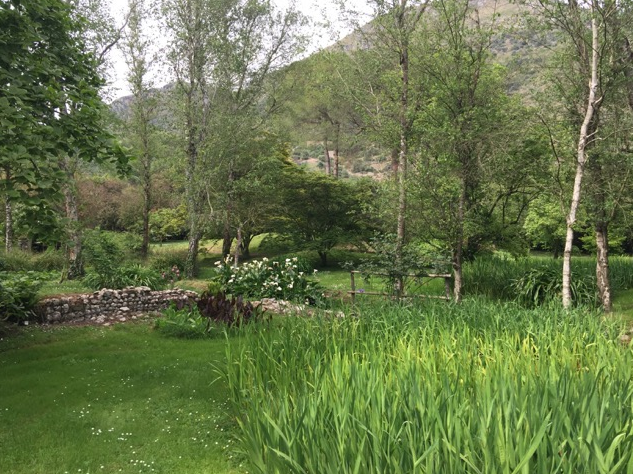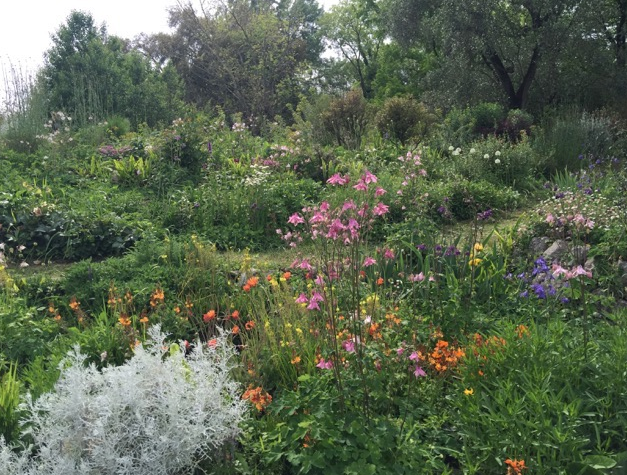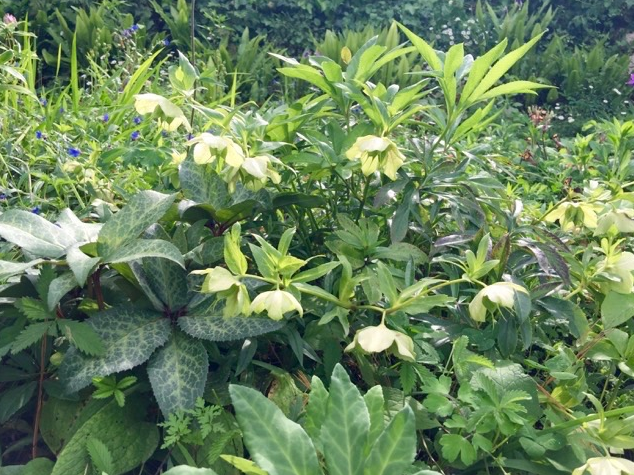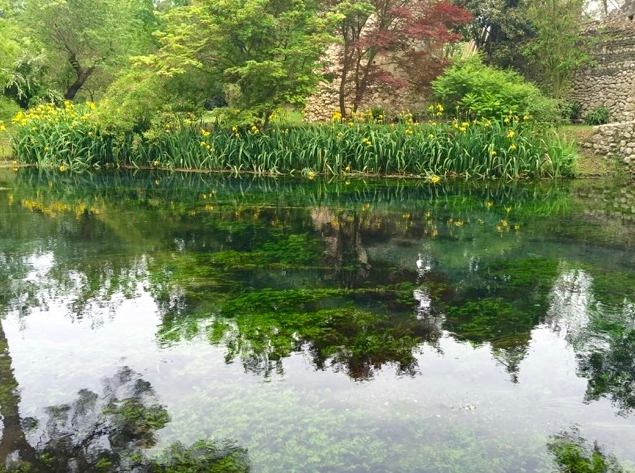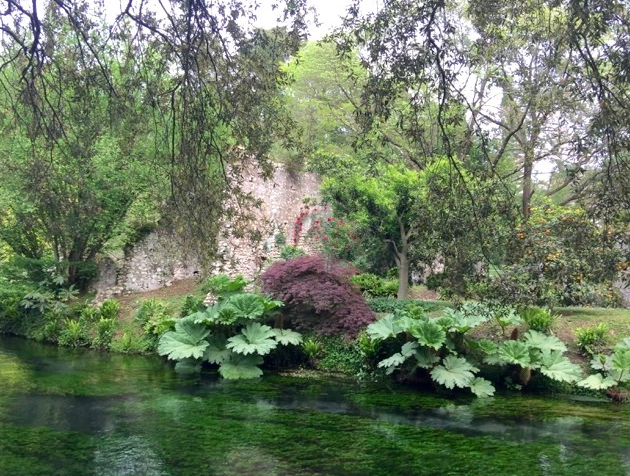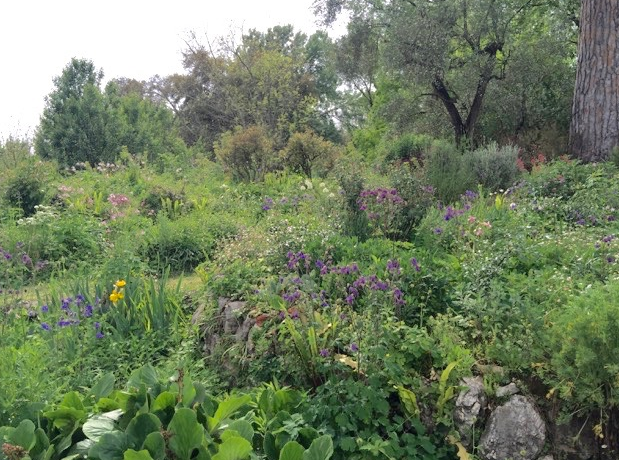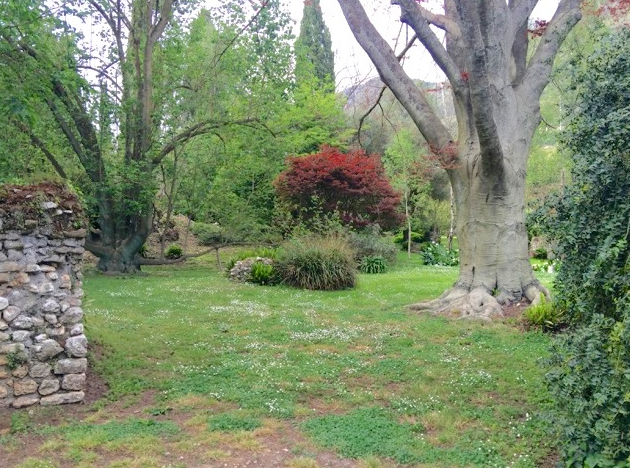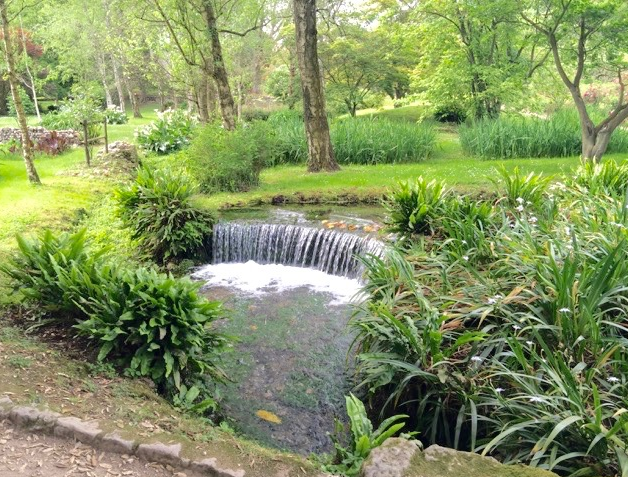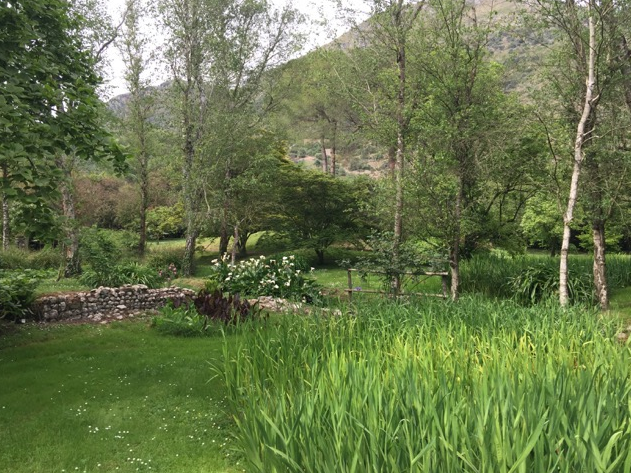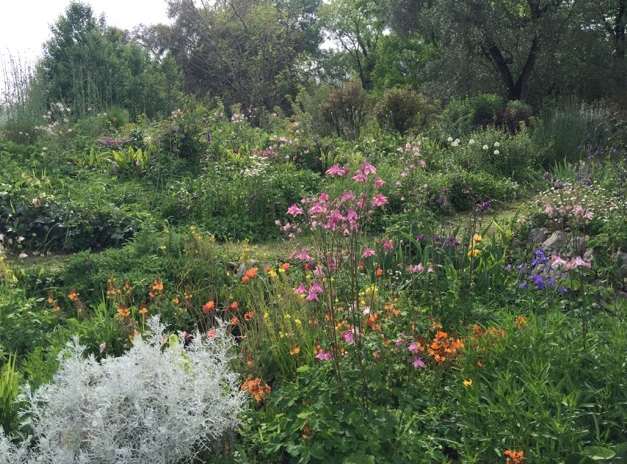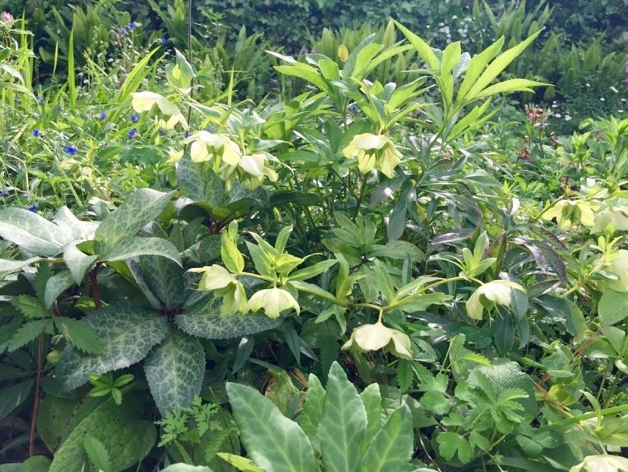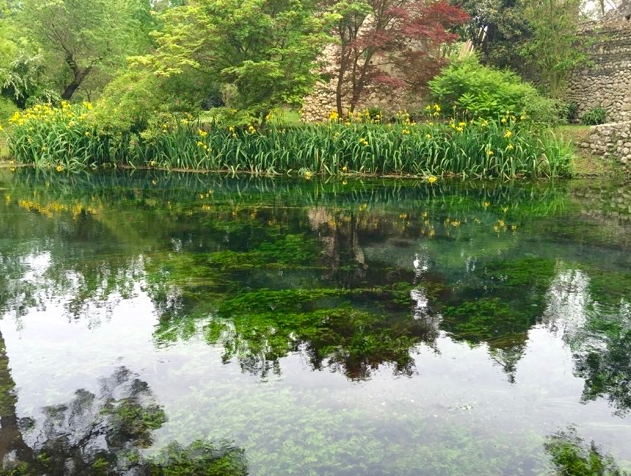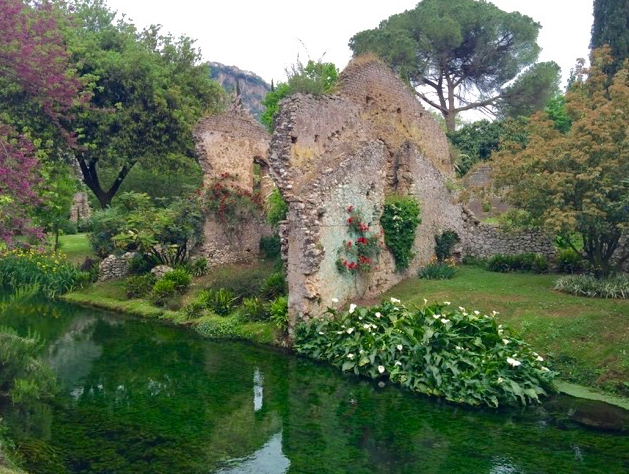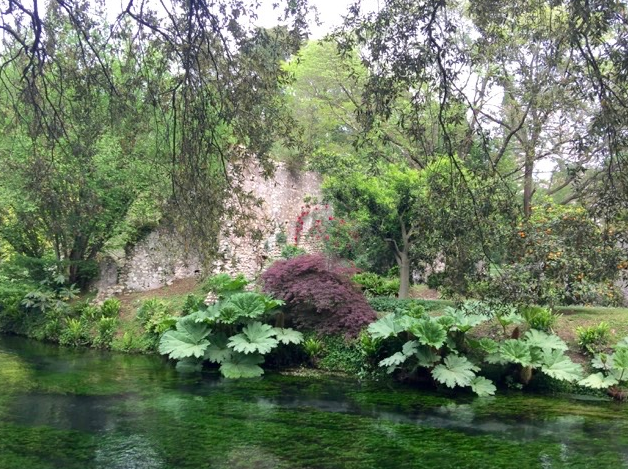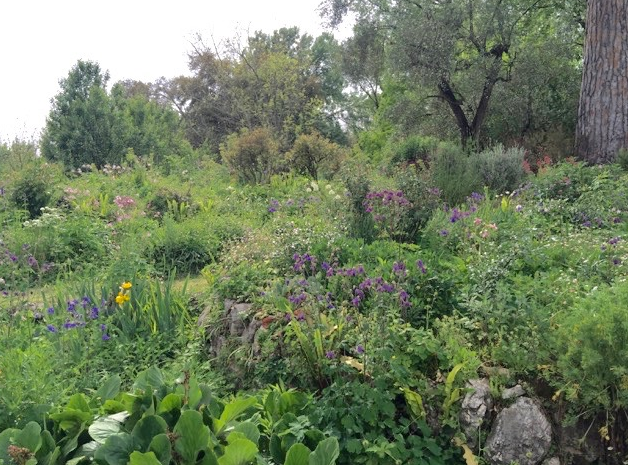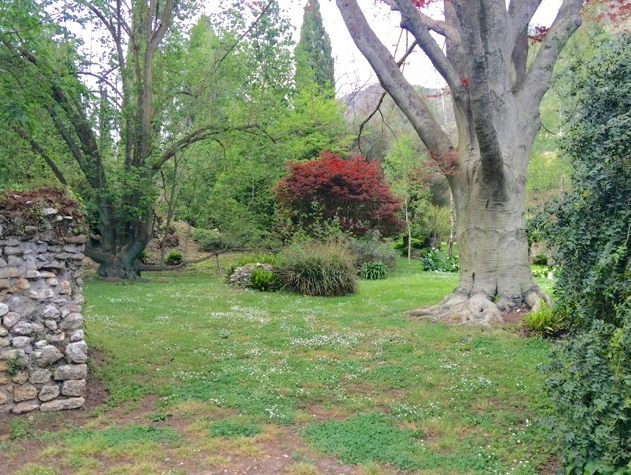Gardening vertically is the perfect solution for growing plants in small spaces, such as patios, decks or balconies. Wherever you live you can create an eye-catching vertical garden arrangement from PVC pipe to grow edibles up instead of out. In this short video, Rita gives you the step by step instructions to create your own vertical garden.

Philodendrons are Fantastic Indoor Garden Plants
When the snow is falling outside, I love to spend quiet meditative time indoors admiring my interior garden. One of the houseplants that I adore is the philodendron. It can look beautiful in your home or at your office all year round. Timeless and classic, the deep green native tropical philodendrons have been soothing our souls for generations. This plant is easy to care for and can live for years and years.
Philodendrons are not flashy. They do not bloom. Instead, they are vines that climb. Their common name translates into “tree lover”. They are tried and true with the ability to survive neglect and adverse conditions. Even the most inexperienced gardener can have success growing a philodendron as a houseplant.

Practicing Tai Chi in the Garden
Think: calm. Think: flexibility. Think: steady breathing. Think about energy flowing through you, around you, within you. Think about connecting your feet to the earth and your hands with the cosmos. Think about the ancient practice of Tai Chi. Now think about practicing Tai Chi in your contemplative garden space.
Tai Chi is a mainstay of class listings at many botanical gardens, but you don’t have to have a grand or professionally landscaped space to reap the benefits of this ancient Chinese contemplative practice.
Tai Chi is often called “meditation in motion.” The mind-body connection and flow of energy remains consistent throughout the practice. The energy is called “Qi,” (pronounced “chee”), and is made up of two different qualities: Yin (solid, dark, cold, passive) and Yang (light, warm, active). The concept of yin and yang—two opposites working together, or soft movements overcoming hard movements—is central to the practice of Tai Chi. Movements are geared toward absorbing and transferring energy. Tai Chi is a whole body spiritual practice that melds the two parts of Qi, the Yin and the Yang together.
The exchange of energy between internal and external forces is amplified when you practice Tai Chi in the garden, as opposed to doing so in an empty room. When you practice Tai Chi in the garden, you’re also adding another dimension—connecting with mother nature and the living beings that surround you. In the garden, the sights, smells, sounds, and gentle touches of a passing breeze or plant waving in the wind remind you that there are other energies coming into contact with your own. As you calmly proceed through the Tai Chi movements, you practice the art of responding to energy directed your way, and allowing it to flow around you. Sounds like a good skill for life, right?

Yoga in the Garden Improves Your Work-Life Balance
Are you lucky enough to work outside in the sunshine and fresh air? Unfortunately, most likely you don’t have this luxury. Like millions of people around the world, you are probably spending most of your day indoors, which influences your physical and mental health.
Stress and anxiety have become a big part of our daily life causing tiredness, lack of concentration, worry, sadness and in some cases, depression.
How to Calm Your Mind and Release Stress
One answer to stress is yoga. Yoga has been practiced for thousands of years, and some doctors now recommend yoga to their patients. For example, the renowned MD Anderson Cancer Center now offers yoga at its Integrative Medicine Center. Dr. Lorenzo Cohen conducted research found that patients in the group assigned to practice yoga reported better quality of life and reduced fatigue.
Many scientifically valid studies show that mindful yogic breathing can improve the body’s response to stress. One study published by the Columbia College of Physicians and Surgeons showed that yoga can alleviate stress, anxiety, depression, post-traumatic stress and many stress-related illnesses. The yoga breathing patterns actually reduced the levels of cortisol and other stress responses. When confronted with stressful situations in life, mindful breathing can help you to control your body’s response. Yoga and mindful breathing will focus your attention on your current surroundings, release the stress of a hectic workday and help you to attain better work-life balance.
What is Yoga?
Additional Benefits of Yoga in the Garden
There are many advantages to taking your yoga and contemplative meditation routine outside into a space like your backyard garden. Research from the American Psychological Association shows that simply by moving outside and engaging in some nature therapy, you will become refreshed more quickly.
Being in nature improves concentration and reduces stress. The simple act of spending time in your garden can improve your performance at work and will give you lasting energy throughout the day.
Doing yoga in a garden unblocks the flow of your mental energy. This will unleash your inner creativity and enthusiasm to continue with your practice. It is a very healthy habit to incorporate into your life.
In today’s world, work tends to follow us even when we’re at home. We constantly check our email and respond to texts rather than focusing on our current surroundings. The result is ever-mounting stress and a lack of enjoyment in our personal lives.
By doing yoga outside, you combine the health benefits of yoga and nature, two potent forces for improving mindfulness and relieving stress. The beneficial effects of taking your yoga practice to the garden will help you focus on your job while you’re working and on your personal life when you’re not.
Physical Benefits to Yoga and Mindful Gardening
Performing yoga in a garden will improve your work-life balance by improving mindfulness. While working, your attention stays on work rather than wandering to home tasks. When not at work, you can more easily leave the stress of your job behind and enjoy your time away. You will feel greater enthusiasm for all parts of your life when you are better able to focus.
The Ninfa Garden – A Roman Enchantment
Springtime in Italy is everything you would imagine it to be: breezy, sunny, filled with fun and joy. Strolling through the Ninfa Gardens, dubbed as the “Most Romantic Gardens in the World” was the cherry on top of my travel sundae. There are no words to describe the breathtaking beauty of this enchanted garden oozing with sacredness and stillness.
The Ninfa gardens are internationally renowned and situated in the province of Lazio, seventy-five miles southeast of Rome and 15 miles from the sea. The name Ninfa comes from a little temple built near the water and dedicated to the Roman nymph goddesses. The present-day gardens were created in the 1920’s around the ruins of a medieval city called Ninfa. The town was built in the eighth century at the foot of a mountain next to a lake with abundant and pure spring-fed water. The town was destroyed in 1381 as a result of a religious feud with a neighboring town. Today the luxuriant gardens are supported and protected by a private family foundation. The result is a blend of the cultivated and the wild, of the romantic and the rational, and above all, the lasting sensation of the mysterious and the sacred.
Enjoy a contemplative moment to browse the beauty of the Gardens Ninfa.
Find Balance by Taking a Time Out in the Garden
Let’s face it. Executives, business owners, managers and directors are busy, busy people. Some days life can be a blur of meetings, commitments and fires to put out. With email, voice mail and snail mail all vying for our attention, things can pile up quickly until we feel like our personal and work lives are out of control.
What can we do to get our lives under control again? To feel productive again? To feel less stressed and harried? Try taking a time out, also called meditation, during your day – every day. More people than ever are doing some form of this stress-busting meditation, and researchers are discovering it has some quite extraordinary effects on the brains of those who do it regularly. When taking a time out in a garden, in a park or in nature, people feel even more relaxed, grounded and connected to that which is beyond us.
Time outs can last as little as five minutes or as long as an hour. The focus of a time out is to quiet your breathing, relax and rejuvenate your overworked mind and body. I have been meditating regularly for over ten years with great results. I like to begin my day gently with an hour of meditation. The result that I’ve had with regular time to quiet my mind is that my days flow smoother, I am more creative and productive. I have found that if I do not make the time to meditate each day I feel frazzled, scattered and unorganized. I feel forgetful and distracted. Life presents speed bumps, not the open super highway.
Neuroscience has now proven that just a few hours of quiet reflection each week can lead to an intriguing range of mental and physical effects. Consider that meditation is now accepted as a useful therapy for anxiety and depression. It’s being explored by schools, pro sports teams and military units to enhance performance, and is showing promise as a way of helping sufferers of chronic pain, too.
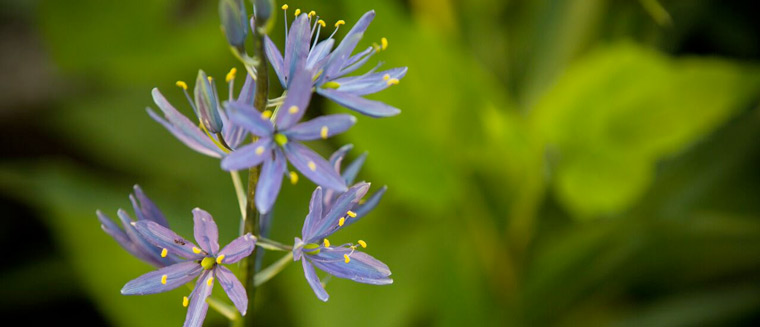
Happiness is Digging in the Dirt
According to the famous plant collector, E.H. Wilson, “There are no happier folks than plant lovers and none more generous than those who garden.” I agree. Researchers now have some proof as to why gardeners tend to be so happy.
Have you ever noticed how good you feel after you spend time in the garden? Or that standing outside and just smelling the smell of good, old-fashioned soil in the air makes you feel better? Science tells us that getting our hands dirty actually gives our brain a boost. Digging in the dirt releases a strain of bacterium in the soil, called Mycobacterium vaccae. M. vaccae triggers a release of serotonin in the brain which provides that lovely lift that we experience. Along with increasing our happiness, serotonin is also credited with decreasing our anxiety level.
M.vaccae enters our bodies through the air that we breathe, so even those who stand nearby and watch someone else dig in the dirt and garden will benefit. This research would indicate that inhaling M.vaccae may be responsible for our feelings of well-being when we are being contemplative in the garden, too. Science also shares that the effects of the natural high seem to taper off after only three weeks.
To keep the natural boost going, it is recommended that we get into the garden as often as possible. Even a weekly dose of M.vaccae will help you continue to feel happy.
Here’s to digging in the dirt, feeling good and gardening mindfully.











